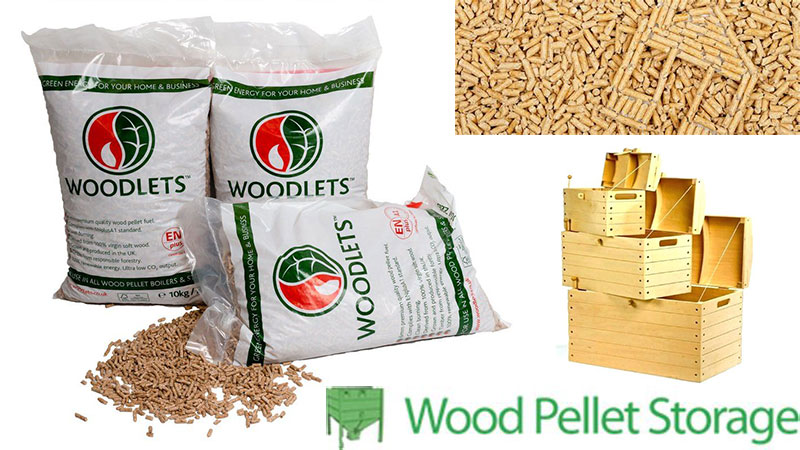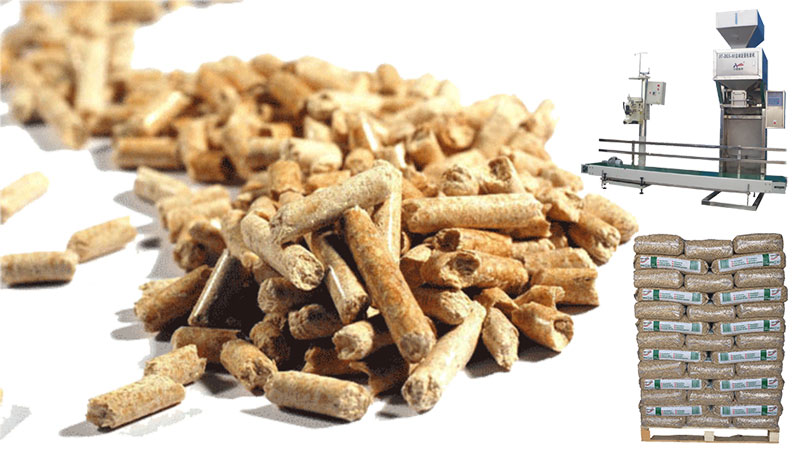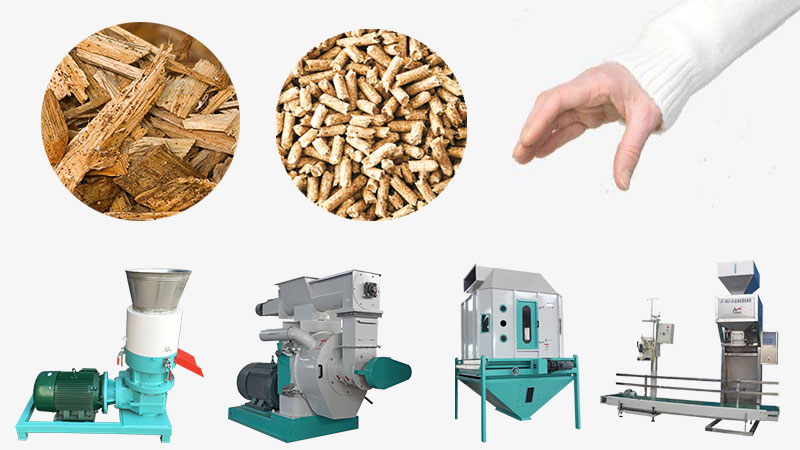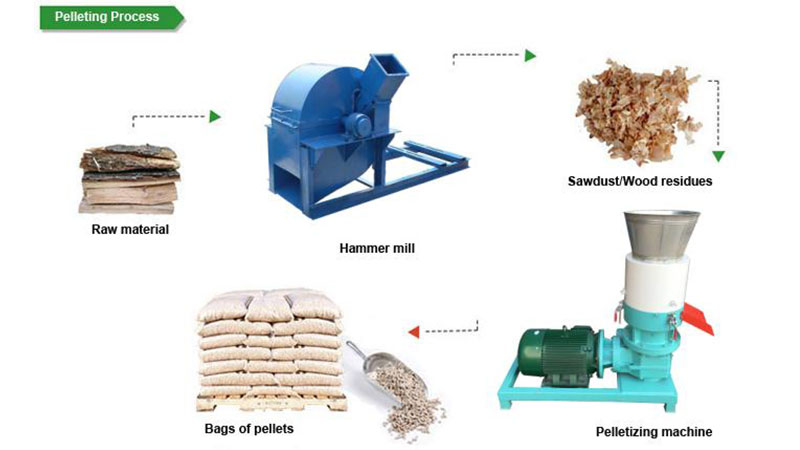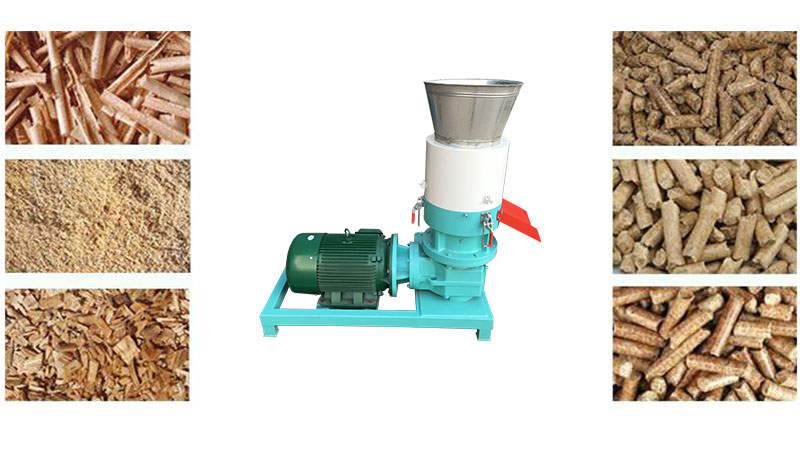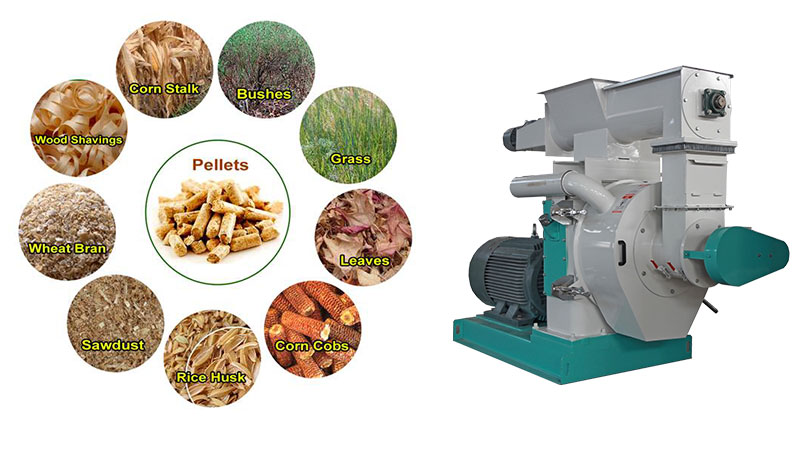 |
Making Good Cotton Stalk Pellets |
I. Necessity of Making Cotton Stalk Pellets
II. Processing Stalk into Pellets
III. Stalk Briquetting
IV. Benefits from Stalk Pellet
V. Prospect of Stalk Pellet Production
Making Good Cotton Stalk Pellets
Cotton plant is a main and primary raw material for textile industry. Global cotton production are about 25 million tonnes or 110 million bales annually, accounting for 2.5% of the world’s arable land. High cotton production is accompanied by generation of tons of cotton wastes each year. Cotton stalk is the main biomass available in the field after the harvest of cotton, which are often disposed of by burning in the field. With the development of modern technology, cotton stalks can be turned into stalk pellets by a wood pellet mill in stalk pellet production line. Making stalk pellets is the cost-effective investment due to competitive superiority of cotton stalk as biomass fuel and stalk pellet’s own advantages in competition.
I. Necessity of Making Cotton Stalk Pellets
1. Amounts of raw materials
According to United State Department of Agriculture, through 2014 to Feb 2015 global top three cotton producing countries are India, China and United States. And Pakistan, Brazil, Uzbekistan and etc. are also main cotton producing countries.
India: It is estimated that about 25 million tonnes of cotton stalk is generated in India every year. Two leading cotton growing states in India are Gujarat and Maharashtra which together contribute over 50% of India’s cotton crop. Most of the stalk produced is treated as waste though a part of it is used as fuel by rural masses. The bulk of the stalk is burnt off in the field after the harvest of the cotton crop.
Pakistan: Pakistan is an agricultural country and produces crop residues of about 84 million tons per year, out of 69 million tons are field based crop residues. Pakistan comes on the 4th position among the largest cotton producing countries in the world which produces 9.7 million bales per year contributing 8.81% of total world. The annual production of cotton stalks is around 13.20 million tons.
Uzbekistan: Due to its large agricultural sector, Uzbekistan has an enormous potential of biomass energy generation. Main source of biomass in the country is cotton stalk. The annual out of cotton stalk is about 3 million tons. Almost all of this cotton stalk resource is consumed for cooking and space heating in the rural area by using the most conservative combustion process.
|
|
|
2. Cotton Stalk Superiority as Biomass Fuel
Depending upon the variety and the crop condition the cotton stalks are 1 to 1.75 meter long and their diameter just above the ground may vary form 1 to 2.5cm. In contrast to other agricultural crop residues, cotton stalk is comparable to the most common species of hardwood in respect of fibrous structure and the calorific value of cotton stalks is equivalent to poor quality wood and is about 17.40MJ/kg. Hence it is suitable raw material for making fuel pellets.
|
property
|
Cotton stalk
|
Hardwoods
|
|
Hemicellulose(%)
|
77.50
|
70-78
|
|
Cellulose (%)
|
47.80
|
45-50
|
|
Lignin (%)
|
21.20
|
30-35
|
Similar to the characteristics of cotton stalk, soy stalk is also the right raw material for pellet production. Cotton and soy stalks’ properties are as follows:
|
Properties
|
Cotton stalk
|
Soy stalk
|
|
Bulk density (kg/m3)
|
248.7
|
263.5
|
|
Moisture content (%)
|
10.2
|
11.84
|
|
Volatile matter (%)
|
73.87
|
82.39
|
|
Ash content (%)
|
12.13
|
10.39
|
|
Fixed carbon (%)
|
14
|
7.22
|
|
Carbon (%)
|
41.80
|
42.80
|
|
Hydrogen (%)
|
6.21
|
5.48
|
|
Oxygen (%)
|
39.42
|
41.41
|
|
Calorific value (kcal/kg)
|
3757.50
|
3504.0
|
|
Lignin (%)
|
20.0
|
12.0
|
3.Cotton Stalk Pellet Superiority

3.1 Superiority to cotton stalk
The following chart-comparison between cotton stalks and cotton stalk pellets shows: with higher average density, cotton stalk pellet is easier to transport and store to lower the cost; compared with raw materials direct combustion, stalk pellet can be burnt at high temperature with high combustion efficiency.
|
Material
|
Moisture content
|
Ash Content
|
Average Density
|
Diameter
|
Calorific Value
|
|
Cotton stalk
|
Under 20% Dry Base
|
6.68%
|
500kg/m3
|
50mm
|
3700Kcal /kg
|
|
Cotton stalk pellet
|
0.62%
|
2.02%
|
1120kg/m3
|
6mm
|
4231Kcal/kg
|
3.2 Superiority to other fuel energy
a. Guaranteed supply
There will always be a demand for cotton, therefore there will never be a lack of raw materials for producing cotton stalk granules. Security of supply is guaranteed with pellets.
b. Stable price
Cotton stalk as the raw material is the sustainable resource, and the price of raw materials is steady. So pellets will be with stable prices not affected by global energy speculation.
c. Wide application and cost-effective
Stalk pellets are often used as heating fuel burned in heating furnaces, boilers, pellets stoves and traditional stoves, and other heating systems. The costs of granule heating are about two-times lower than the costs of liquid fuel or liquefied gas.
d. Environmentally friendly
Unlike petroleum and gas, the combustion products of granules are CO2 neutral; as a result, granules do not promote the greenhouse effect.
II. Processing Stalk into Pellets
Besides pellet production line for large capacity production, there are small scale fuel pellet making machine and auxiliary machines available for small scale production. The cotton stalk pellet manufacturing process generally includes: grinding, drying, pelletizing, cooling, sieving and packaging. Besides cotton stalk, other stalks from rice, wheat, corn, tuber crops, oil crops and etc. are also suitable for the following pellet production.
1. Grinding and Drying
Before stalks can be pelletized, it is vital that the size and the moisture content of the material are suitable. The proper size is less than 6mm and the suitable moisture content is about 18%. So the hammer mill is necessary equipment to crush stalk into short particles. If your material moisture is less than 18%, the drying process is not necessary. If the moisture content is higher, use sawdust dryer. But remember that raw materials should not be too dry, the minimal level is 12%.
2. Pelletizing
Stalk pellet making machine, also known as wood pellet mill or extruder, is available in different capacities. There are two types of fuel pellet machine, namely, flat die wood pellet mill and ring die wood pellet mill. Flat die wood pellet mill can be driven by electric motor or diesel engine, and the flat die pellet mill, featured with small size, easy to move, easy operation and maintenance, is the preferred pellet making machine for small scale pelletizing.
3. Cooling
As the pellets leave the pellet mill, they are hot and soft. Thus they need to be cooled in the pellet cooler. The cooling process is important for the strength and durability of the pellets.
4. Screening and Packaging
The cooled pellets should be passed over a vibrating screen to remove fines among the pellets. These fine material can be sent back to the pelletizing process. Once screened, pellets are ready to be packaged for the desired end use.
Tips for pelletizing
1.Transporting distance plays a major role in deciding the effective cost of the raw material. And it would be better that pellet production is near the place with abundant raw materials.
2. The cotton stalks usually contains some contamination and impurities, so before pelletizing, the raw materials
should be cleaned in some way.
3. If it is necessary, you can add specific binders during pelletizing to prevent the pellets from disintegrating./p>
III. Stalk Briquetting
Stalks are usually processed into biomass briquettes due to briquette feature of high volatility, easy precipitation, good carbon activity, flammable and cost reducing. The briquetting process starts with collection of wastes followed by size reduction, drying, and compaction by extruder or press. In general, the moisture content, fraction size, pressing temperature, and compacting pressure are the most important parameters to manufacture briquettes with acceptable quality. Fraction size has great influence on the briquetting process. The pressing temperature and compacting pressure depend on the type of briquetting machine used. So opt quality briquette extruder is vital for stalk briquetting.
|
Properties of Briquettes
|
Cotton stalk
|
Soy stalk
|
|
Bulk density (kg/m3)
|
641.20
|
657.90
|
|
Volatile matter (%)
|
75.56
|
80.71
|
|
Ash content (%)
|
14.80
|
8.65
|
|
Fixed carbon (%)
|
9.64
|
10.64
|
|
Carbon (%)
|
40.52
|
43.50
|
|
Hydrogen (%)
|
8.61
|
9.20
|
|
Oxygen (%)
|
38.90
|
41.65
|
|
Calorific value (kcal/kg)
|
4566.90
|
4892.64
|
IV. Benefits from Stalk Pellet
For government economy:
For farmers, agricultural residues can turn into valued products. Traditionally after crop harvest, farmers burnt or otherwise disposed of stalks and other residues in the field. The marketability of drop stalks will boost local economies by providing jobs and services. An increase in farm earnings will diminish the need for farm subsidies, which will eventually reduce farmers’ reliance on the government for support. For industry, biomass pellets could replace the non-renewable furnace oil or natural gas, which can effectively reduce the production cost.
For environment:
The burning of agricultural stalks causes air pollution, soil erosion, and a decrease in soil biological activity, which eventually leads to lower yields. However, burning yields smoke and other pollutants which adversely effect air quality, visibility, and human and environmental health. Processing these stalks into pellets not only avoid environmental pollution but also make you get profit from the valued fuel pellets. These stalk pellets can be burned in heating furnaces, boilers, pellets stoves and traditional stoves, and other heating systems. The costs of granule heating are two-times lower than the costs of liquid fuel or liquefied gas.
V. Prospect of Stalk Pellet Production
1. Ample raw materials keep stalk pellet production sustainable
Global demand for cotton consumption continues to grow driven by the fiber demands of the fast growing economics like India and China and the growing world population. It is estimated that, the global demand for cotton will be about 48 million metric tons by 2030. Broadly, there will be amount of cotton stalks as raw materials for pellet production.
2. Development of bio-energy market provide opportunity for making pellets from stalks
Due to mounting social and political pressure to reduce greenhouse gas emission, bio-energy products are of increasing interest to developers and regulators. The combustion of biomass for energy is recognized as being neutral in terms of greenhouse gas emission. This will be great market for stalk pellet production.
Therefore, it is time for embracing pellet making technologies for better transferring cotton stalk biomass into the valued form of bio-fuels.






